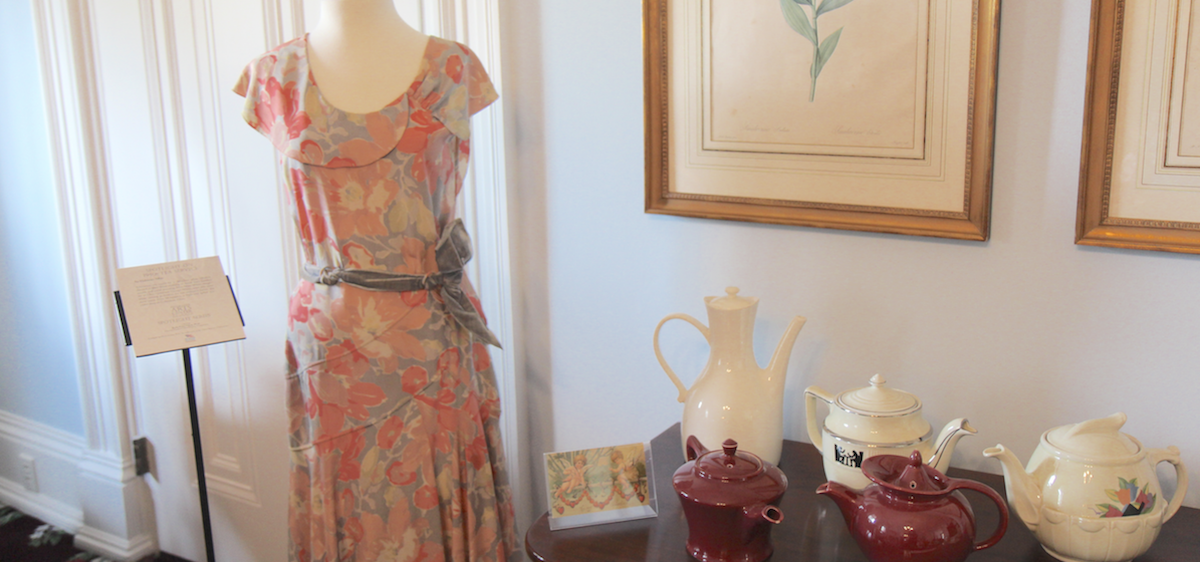Culture

Spotlight on Mid-century Tea at Decorative Arts Center of Ohio
By: Emily Votaw
Posted on:
The tradition of serving tiny pastries, little cookies, and miniature sandwiches alongside warm tea (and perhaps hotter gossip) in an elegant display in the afternoon among a collected group of often female friends dates back to early 19th century Britain. At that time Anna Russell was the Duchess of Bedford, and she found that she got a bit faint in the afternoon after her noon meal and before her late evening meal, which often was served between 8 p.m. and 9 p.m. She started to ask for a bit of tea and a small snack in the late afternoon, an occasion that she would often invite her other upper class friends to attend. The idea soon became what we now know as “afternoon tea.”
“(Anna Russell’s) idea really took off, among the upper classes and the middle classes, and even among the lower classes,” said Dr. Becky Preiss Odom, Ph.D. of the Ohio History Connection. Odom is the curator of the current spotlight exhibition on afternoon tea in the parlor of the Decorative Arts Center of Ohio (145 East Main Street, Lancaster). Spotlight exhibitions change every six months and feature artifacts on loan from the Ohio History Connection. “Tea was something that spanned all different classes of women, all geographic areas — it could be as fancy or as simple as a woman wanted it to be.”
While afternoon tea enjoyed enormous popularity throughout Britain and the United States throughout the early portion of the 20th century, World War II interrupted the social phenomenon.
“During the war, many women had gone to work or they were volunteering to help with the war effort through the Red Cross or other organizations, so they just weren’t around as much during the afternoon,” Odom said, explaining the phenomenon’s decline. “There was also rationing, so having flour to make some of the little pastries and sandwiches you would have with afternoon tea became more difficult to get a hold of. Tea started to seem like a luxury that should not happen during wartime.”
After the war afternoon tea was trumped by another strong, very American social phenomenon, the development of the family dinner that would occur directly after the father of the nuclear American family came home from his 9 a.m. to 5 p.m. workday. This much earlier dinner eliminated the need for a late afternoon snack, so tea just sort of faded out of fashion in the United States in the ’40s and ’50s.
As a part of the afternoon tea theme, the Decorative Arts Center of Ohio is displaying some of the Ohio History Connection’s collection of early 20th century Hall China Company tea wares, including several tea and coffee pots, small cups, and saucers.
The 117-year-old Hall China Company still operates out of East Liverpool, OH, although now it is a part of the Homer Laughlin China Company. Hall China was started by Robert Hall, who created not only a time-and-money-saving one-fire process for creating ceramics, but also started to make his wares, such as coffee and teapots, in one piece, which made them much stronger than if they were made of smaller pieces assembled together, which was the way in which most manufacturers made such products at the time.
In addition to the Hall China Company pieces, the Decorative Arts Center also has a dress worn by Miss Mary White, the daughter of widowed Ohio Governor George White, on display. The dress was purchased at Montaldo’s, a Columbus high-end ladies clothing shop, and Miss White wore it while hosting. The outfit serves as an example of the fine, high-end clothing that ladies would often wear to attend afternoon tea.
The Decorative Arts Center of Ohio is located at 145 East Main Street in Lancaster. The museum’s hours are 10 a.m. to 4 p.m. Tuesday through Friday, 1 p.m. to 4 p.m. on Saturday and Sunday. The museum is closed on Mondays. Admission is always free.

